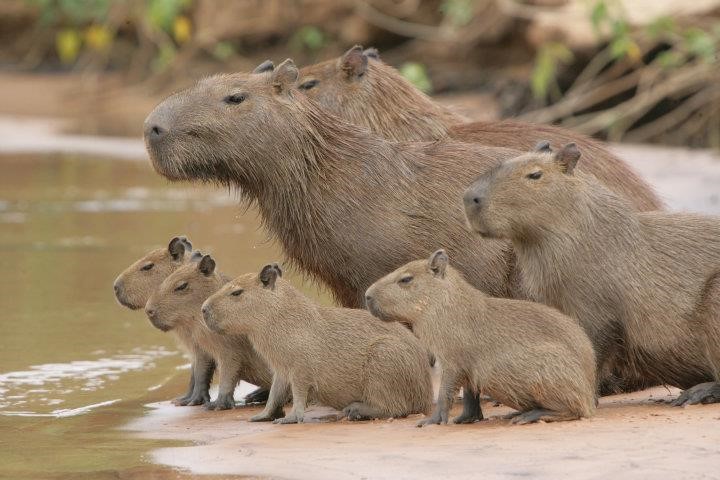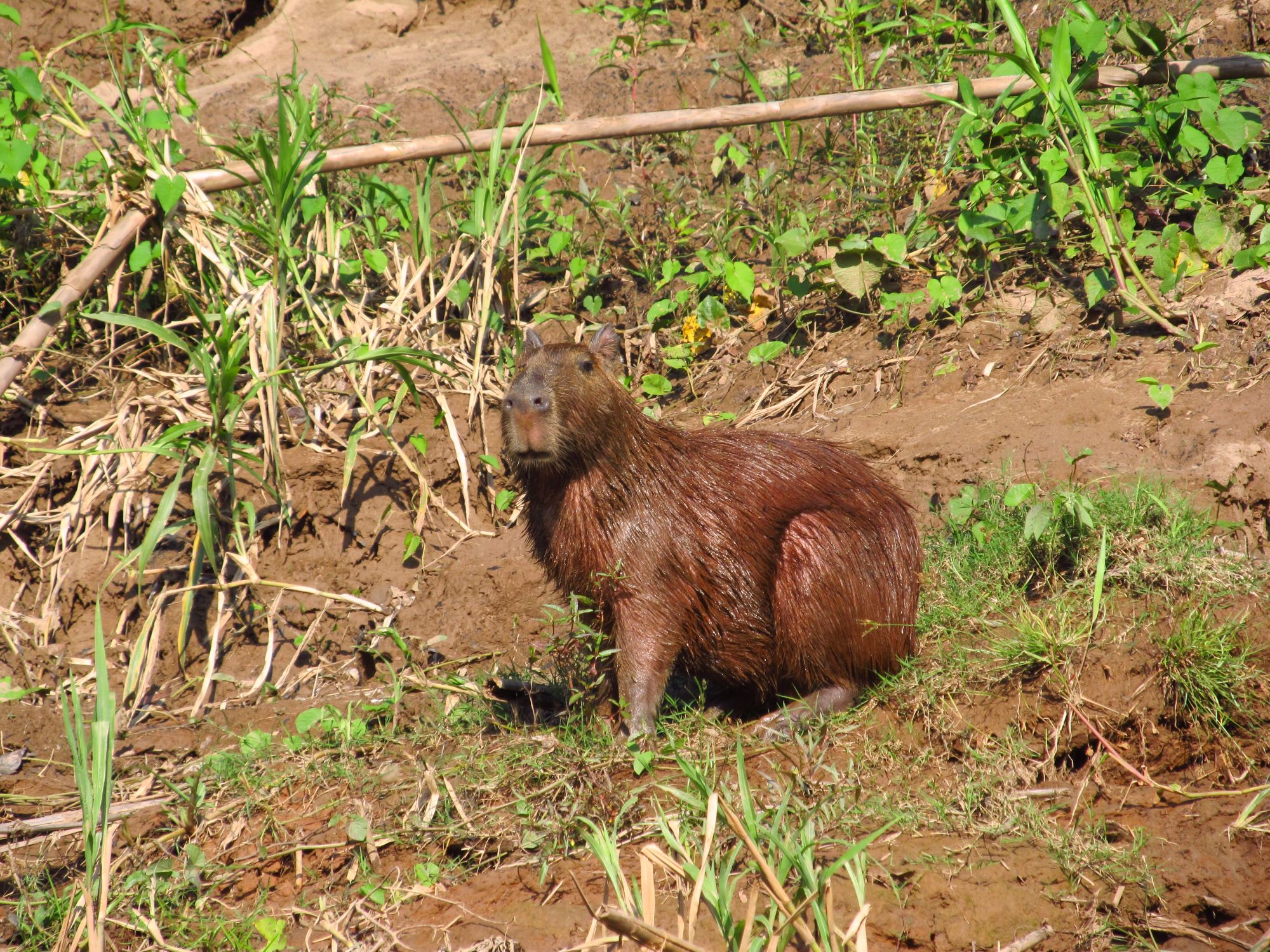General information
- Genus: Hydrochoerus
- Species: Hydrochaeris
- Also known as: Water Pig
- Average length: 1 – 1.3 m (3.5 – 4.4 ft.)
- Adult weight: 35 – 66 kg (77 – 145 lb.)
- Diet: Grass, aquatic plants and sometimes bark and fruit.
- Natural predators: Caimans, anacondas, jaguars
- Life span in the wild: 6 years (up to 10)
- Litter size: 2 – 8 (average 3.5)
- Natural habitat: Always near water – marshes, rivers, streams and estuaries.
- Geographical range: Common in unpopulated areas across the Amazon (from Colombia and Venezuela to northern Argentina)
Interesting Capybara facts
- The Capybara is the largest rodent in the world and can weigh as much as an average man.
- They are semi-aquatic animals and are strong swimmers – they can stay underwater for 5 minutes and use the water as an “escape route” from predators. It is also where they mate.
- The name “Capybara” comes from the native Brazilian language, Tupi, and means “one who eats slender leaves”.
- They are coprophagous animals, meaning they eat their own faeces. They do this to gain the maximum nutrition from their food and help digest the cellulose in the grass they eat. They may also regurgitate and re-chew their food.
- They are highly social mammals and live in groups of around 10, sometimes up to 30 – possibly to create safety in numbers as they are hunted by various large predators.
- They are rather vocal animals and use a large variety of sounds to communicate, including barks to signal danger.
- Capybara males are known to be rather promiscuous, i.e. they have various mates in their lifetime, and there is a strict hierarchy system enforced by fighting and chasing.
- Males are distinguishable from females by a scent gland on top of their snouts which secretes a white sticky liquid understood to be used to mark their dominance over others.
- The Capybara is severely threatened because it is hunted a lot for its skin used to produce valuable leather and for its meat.
IUCN conservation assessment
- Estimated world population: Unknown
- Conservation status: Least Concern
- Population trend: Unknown
Sources
- Animal Diversity Web, Museum of Zoology – University of Michigan
- Queirolo, D., Vieira, E. & Reid, F. 2008. Hydrochoerus hydrochaeris. In: IUCN 2012. IUCN Red List of Threatened Species. Version 2012.2. Downloaded on 08 May 2013.

Capybara family in Tambopata

Capybara by the banks of the Tambopata River
